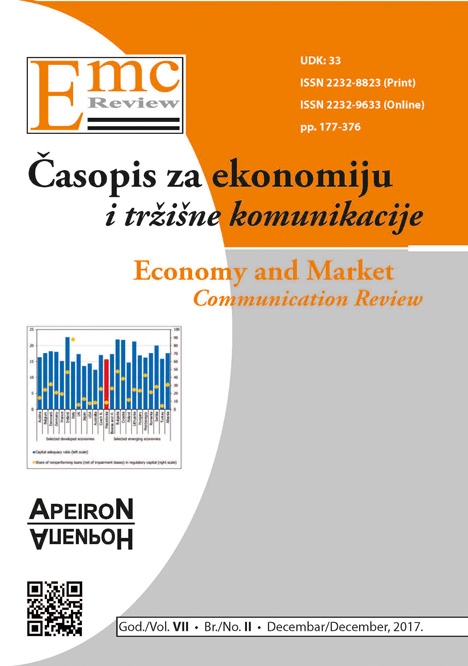THE IMPACT OF THE NON-PERFORMING LOANS TO BANKS’PERFORMANCE: THE CASE OF THE REPUBLIC OF MACEDONIA
DOI:
https://doi.org/10.7251/EMC1702184JAbstract
The paper investigates the relationship between non-performing loans and the basic indicators for banks’performance. The analysis was conducted among the banking sector in the Republic of Macedonia for the period 2007-2015. The share of non-performing loans in total loans is one of the basic indicators for the quality of the credit portfolio in banks. The analysis of the movement and the level of non-performing loans is of great importance for identifying possible problems in bank risk management as a whole. With the application of correlation and regression method, we confirmed the findings of the consequences of non-performing loans on the performance of banks. The results indicate that a large share of non-performing loans to total loans leads to deterioration in the financial and liquidity position. There is a weak negative correlation between the rate of capital adequacy and non-performing loans ratio and that requires further research.Downloads
Published
2017-12-21
Issue
Section
Чланци
